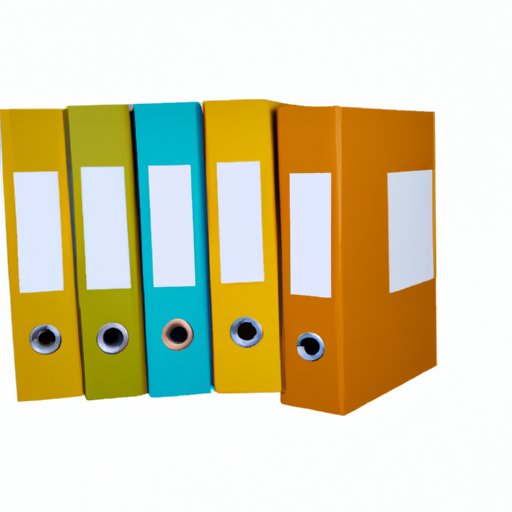
I. Introduction
As any Mac user knows, organization is key to keeping your computer running smoothly and efficiently. And one of the most important aspects of organizing your files is creating folders. Folders help keep your files in order, prevent clutter, and make it easier to find what you need when you need it. In this article, we’ll take a detailed look at how to create folders on a Mac, along with common mistakes to avoid, different folder structures, and even third-party applications that can make the process even easier.
II. Step-by-Step Guide
Method 1: Using Finder – Open Finder and choose where you want to create the new folder. Click on “File” in the top left menu and select “New Folder”. Type in a name for the folder and press “Enter”. Your new folder will show up in the location you selected.
Method 2: Using Keyboard Shortcuts – Select the items that you want to put into a new folder by clicking on each one while holding down the Command key. Once you have selected all the items, press the Command + Shift + n keys simultaneously. Type in a name for the folder and press “Enter”.
Method 3: Using the Context Menu – Select the items or file you want to put into a new folder. Right-click on the selected items and select “New Folder with Selection” from the drop-down menu. Type in a name for the folder and press “Enter”.
Once you have created your folders, it’s important to organize and name them in a way that will make it easy to find what you need. For example, consider naming folders based on the project they contain, or by date if it’s a group of images or documents. You can also color-code your folders, add tags, or use other conventions to help you stay organized.
III. Common Mistakes to Avoid
One of the most common mistakes when creating folders on a Mac is accidentally creating an alias folder instead of a real one. This can happen if you use the “Make Alias” command instead of “New Folder.” Make sure to double-check that you’ve created a real folder that contains the files and not an alias that just points to the original files.
Another mistake is misnaming files or folders, or using names that are too long or complicated. This can make it harder to find what you need, especially if you have many files or folders on your Mac. Finally, avoid creating too many folders, which can become unwieldy to manage and create clutter rather than organization.
IV. Use Cases for Different Folder Structures
There are several different ways to structure your Mac folders, and each has its advantages and disadvantages:
Structure 1: Organizing files by date – This is a good option if you have a lot of photos or documents that are all related to a specific time period. You can create folders by year, month, or date, and then sort your files into those folders. This makes it easy to find everything from a particular time period.
Structure 2: Organizing files by project – This is a good option if you have a lot of different projects going on at once. You can create a folder for each project, and then sort your files into those folders. This makes it easy to find everything related to a particular project.
Structure 3: Organizing files by type – This is a good option if you have a lot of different types of files, such as images, documents, and videos. You can create folders for each type of file, and then sort your files into those folders. This makes it easy to find everything of a particular type.
Ultimately, the best structure for your Mac folders depends on the files you have and how you work with them. Try different approaches to find the one that works best for you.
V. Beginner versus Advanced Methods
Creating folders on a Mac can be a simple process or a more advanced one depending on your skill level. For beginners, the easiest way to create a folder is to drag two or more icons onto each other. This will automatically create a new folder containing those icons. This method is quick and easy but doesn’t allow for customization.
For more advanced users, creating Automator scripts can automate the process of folder creation. This method requires some programming know-how but can be a real time-saver, especially if you need to create many folders at once or on a regular basis.
VI. Using Third-Party Applications
There are several third-party applications available that can make creating folders on a Mac even easier:
Tool 1: Hazel – Hazel is a tool that can automatically organize and rename files on your Mac. With Hazel, you can create rules that automate the process of creating and organizing folders, making it easy to keep everything in order.
Tool 2: Automator – As mentioned earlier, Automator can also be used to create automated folder creation scripts. This is a powerful tool that can help you streamline your daily workflow and save time.
Tool 3: Alfred – Alfred is another productivity tool that can be used for creating and managing folders on a Mac. With Alfred, you can use custom shortcuts and searches to quickly create new folders or navigate within existing ones.
Each of these tools has its own strengths and weaknesses, so it’s important to choose one that fits your needs.
VII. Conclusion
In conclusion, creating folders on a Mac is a straightforward process, but it’s important to do it right in order to stay organized and efficient. Remember to label, color-code, and structure your folders in a way that makes sense for your needs, and avoid common mistakes like creating alias folders or using confusing naming conventions. With the right approach and tools, you can easily keep everything in order and find what you need when you need it.




